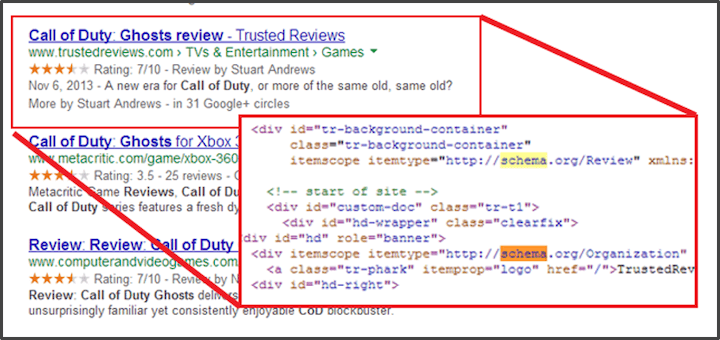Hey there! Welcome to our beginner’s guide to technical SEO in 2025. Whether you’re new to this or have some experience, knowing about technical SEO is very important for getting your website in search results.
In this guide, we’ll talk about technical SEO audits and provide you with a free technical SEO audit checklist.
We’ll break down what they are and how they can help your website show up better on Google and other search engines.
Our goal is to make things easy to understand, so you can use technical SEO to make your website more visible when people search online. Let’s dive in and learn together!
What is a Technical SEO Audit?
A technical SEO audit is like a health checkup for your website’s tech stuff that affects how it shows up in Google and other search engines.
It helps make sure your site is easy for search engines to understand and list in search results.
By doing these checkups regularly, you can find and fix any technical problems on your site. This can make your site perform better in search results over time.
When’s the Right Time for a Technical SEO Audit?
When you start doing SEO for a new website, you need to perform a Technical site audit at the beginning.
After that, you can check your technical performance after 3 months. For better results, you should do regular checks as part of keeping your site healthy.
This is especially important if your site keeps putting out new stuff. Also, it’s a good move to do an SEO check when you see your rankings staying the same or going down.
How to Perform a Technical SEO Audit?
Performing a technical SEO audit can help you find and fix issues that might be holding back your website’s search engine performance. Here’s a simplified guide to get you started:
Crawl Your Website:
Crawling your website means checking every part of it to find out what’s working well and what needs fixing for better search results.
You can use SEO Tools like Screaming Frog or Google’s Search Console to do this job by looking at all your pages, links, and content.
They find problems like broken links or pages that are hard for search engines to understand. By crawling, you get a clear picture of how your website is set up and what could be improved.
It’s like taking a close look at your site to make sure it’s easy for search engines to find and understand, which helps your site do better in searches.
Checking Indexing Status

Checking indexing status means making sure search engines are listing your pages correctly.
You want to ensure all the important pages are showing up in search results. Look out for any pages that shouldn’t be listed, like duplicates or pages with very little content.
If these pages get indexed, they could confuse search engines and affect your site’s visibility.
By keeping an eye on indexing status, you can make sure your site is showing up in search results the way you want it to, helping more people find and visit your website.
Review Site Structure:

Reviewing your site structure means looking at how your website is organized to make sure it’s easy for both search engines and people to find their way around.
Check that your website’s address (URL) layout makes sense and includes words that describe what each page is about.
This helps search engines understand what your website is about and can improve your chances of showing up in search results.
A well-organized site structure makes it easier for visitors to find what they’re looking for, which can improve their experience and keep them coming back to your site.
Analyze Page Speed:

Analyzing page speed means checking how fast your website’s pages load. If they load slowly, it can hurt your website’s chances of showing up in search results.
Tools like Google PageSpeed Insights can help you see how quickly your pages load and find ways to make them faster. This might involve things like compressing images, reducing unnecessary code, or upgrading your hosting.
By improving your page speed, you make it easier for people to use your website, which can lead to more visitors and better search engine rankings.
Mobile-friendliness:
Mobile-friendliness is super important because lots of people use their phones to browse websites. Your site needs to work well on mobile devices too.
Google has a tool called the Mobile-Friendly Test that checks if your site is easy to use on phones and tablets. It looks at things like text size, button spacing, and how well pages fit on smaller screens.
If your site passes the test, it means mobile users can navigate it easily. Making your website mobile-friendly ensures that everyone, whether they’re using a phone, tablet, or computer, can enjoy a smooth browsing experience.
Check for HTTPS:
Checking for HTTPS is important to keep your website secure. HTTPS protects the information users send and receive on your site, like passwords or credit card details, from being intercepted by hackers.
Search engines also like secure sites, so using HTTPS can improve your site’s ranking in search results. To check if your site has HTTPS, look at the web address.
If it starts with “https://” instead of just “http://”, it’s secure. If your site isn’t secure yet, you can get an SSL certificate to make it HTTPS and boost your website’s security and SEO.
Fix Crawl Errors:

Fixing crawl errors is important to make sure search engines can properly explore your website.
If there are errors, like 404 pages (which means a page couldn’t be found) or server problems, it can stop search engines from understanding your site properly. Google Search Console shows you these errors.
To fix them, you might need to update links, fix broken pages, or check your server settings.
By resolving these issues, you help search engines better understand and index your site, which can improve its visibility and ranking in search results.
Optimize URL Structure:
Optimizing your URL structure means making your web addresses easy to understand and relevant to your content.
Instead of long, confusing URLs, use short and clear ones that include keywords related to the page’s topic. This helps both people and search engines know what each page is about before even clicking on it.
For example, a good URL for a page about healthy recipes could be “yourwebsite.com/healthy-recipes” instead of something like “yourwebsite.com/page123”.
By using descriptive and keyword-rich URLs, you make it easier for users to remember and share links, and improve your site’s chances of ranking well in search results.
Schema Markup:

Schema markup is like adding special tags to your website’s content to help search engines understand it better.
It gives search engines extra details about things like events, recipes, or reviews. This makes it easier for search engines to show your content in special formats, like in rich snippets with pictures or star ratings.
By using schema markup, you can make your website stand out in search results and attract more clicks from people looking for specific information. It’s a way to give search engines a helping hand in understanding what your content is all about.
Internet Linking:
Internal linking means connecting different pages on your website with clickable links. This helps visitors navigate around your site easily.
But it’s not just helpful for people; it’s good for search engines too! When you link between pages on your site, it shows search engines how your content is related and organized.
This can improve your website’s SEO because search engines can understand your site better and know which pages are most important.
So, by reviewing and improving your internal linking, you can make it easier for both visitors and search engines to explore and understand your website.
Monitoring and iterating:
Monitoring and iterating on your website’s SEO is like keeping an eye on how well it’s doing in search engines and making changes when needed.
Check things like how many people are visiting your site and where they’re coming from. If you notice areas that need improvement, like low rankings or fewer visitors, make adjustments.
Stay updated on new trends and changes in search engine rules (algorithms) to make sure your website stays competitive. By regularly monitoring and improving your SEO, you can help your website stay visible and attract more visitors over time.
Free Technical SEO Audit Checklist
Get a free Technical SEO Audit Checklist! You can download the PDF or copy the sheet.
This helps make your website better for search engines. It checks things like how fast your site is and if search engines can find it easily. Make your site better and get more people to visit it!
Conclusion:
Learning about technical SEO audits can help your website get seen more on Google and other search engines. When you understand how it works and put it into practice, your website can reach more people online.
The main idea is to make things easier for everyone to understand and use. So, let’s keep learning and using these tips to make sure your website stands out and gets noticed by more people on the internet!

I’m Shivam Panchal, an SEO expert and digital marketer from Delhi. I run SEO Shades, where I share practical SEO tips, link-building strategies, and website growth hacks. With over 3 years of experience, I help businesses boost their online visibility and rank higher on Google.


